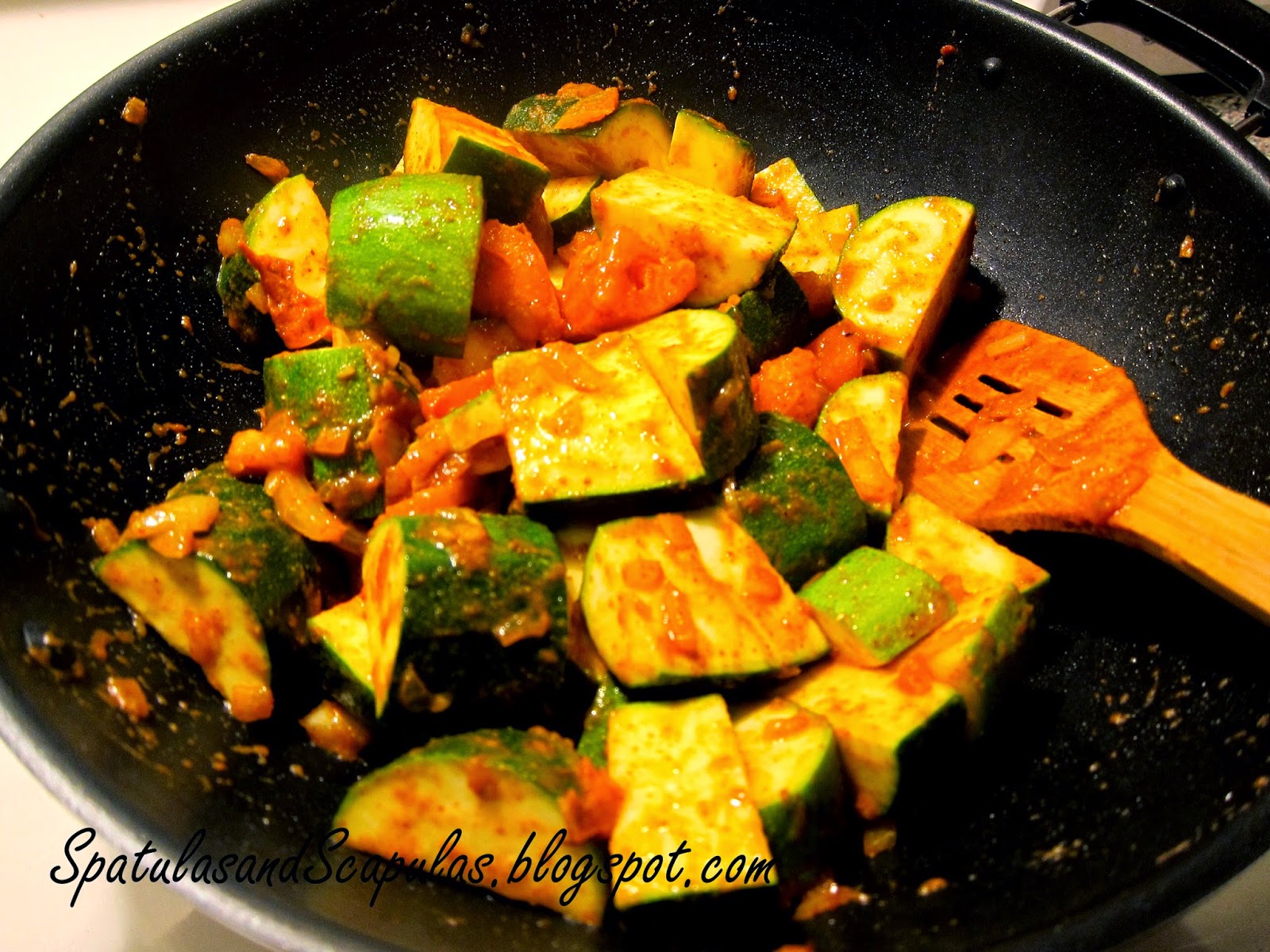Most of the ingredients used in this are straightforward Indian spices which do not require a trip to your local Indian grocery store. However, there is one ingredient that might give you a bit of trouble, "Panch Poran" which literally translates into "5 Seasonings". Unsurprisingly, it consists of 5 different whole seeds: fenugreek, nigella, black mustard, fennel and cumin.
It's sold in most Indian grocery stores and is a cornerstone of Bengali cooking. If you can't get it, no worries. Just substitute some 1 tsp each of cumin and coriander powder.
Ingredients
1 1/2 pounds of white fleshed fish. I personally like Basa (see my Chili Fish post for more info about it)
1/2 tsp turmeric
1 tsp chili powder
1/2 tsp salt
Cooking Spray
2 medium sized zucchini, skin on, halved lengthwise and then cut into 2 inch pieces in cross section
1 tsp panch poran
1 3inch piece of ginger, peeled and grated (I use double this amount, but I really like ginger)
1 small yellow onion, finely chopped
2 plum tomatoes, finely chopped
1/2 cup water
1/2 bunch of cilantro, leaves only
 |
| Ginger and Onion |
 |
| Ginger about the size of my hand, 5-6 inches |
 |
| Ginger peeled and grated, will definitely be less than what you started with |
1. First coat the shrimp and fish in turmeric, chili powder and salt and let sit for 10-15 min
2. Coat a pan with cooking spray and heat over medium heat
3. Fry the shrimp until they just start to turn orange, about 20 secs on each side.
4. Recoat the pan with cooking spray
5. Fry the fish, until the flesh starts to firm up and gets a little crisp, about 45 secs on each side.
6. Drain both the shrimp and fish on a paper towel and set aside
7. In the same pain, heat 2 tbsp of oil over med high heat
8. Add in the panch poran and stir fry for about 20 secs or until fragrant
9. Add in the onion, ginger, tomato and stir fry until the panch poran is well distributed in the mixture
10. Fry for about 5 min, adding more oil, 1 tsp at a time, if the mixture starts to stick to the pan
11. When the onion and tomatoes form a paste, add in the zucchini and stir until the zucchini is well coated with the onion/tomato mixture
12. Turn the heat to low and cover the pot. The zucchini should start to release water. After about 10-12 min, add the 1/2 cup of water and bring to a simmer.
14. Simmer for 20-30 more min or until the zucchini is 3/4 cooked through.
15. Add the fish in and cook until the fish is cooked through
16. Add in the shrimp and cook for 5 more min. Season with salt to taste.
17. Turn off the heat and add in the cilantro on top
 |
| I didn't precook the fish in this recipe just to see how it would be. I prefer it gently fried before hand |
If you let the cilantro just sit in the hot broth, it should wilt sufficiently and lend its flavor to the broth. The timing of when to add the fish and shrimp is the hardest part so that you don't over cook either, so be extra cautious during this period. You can also add fresh ginger at the end to give it a bigger kick.
Spoon over hot rice and enjoy!
















































